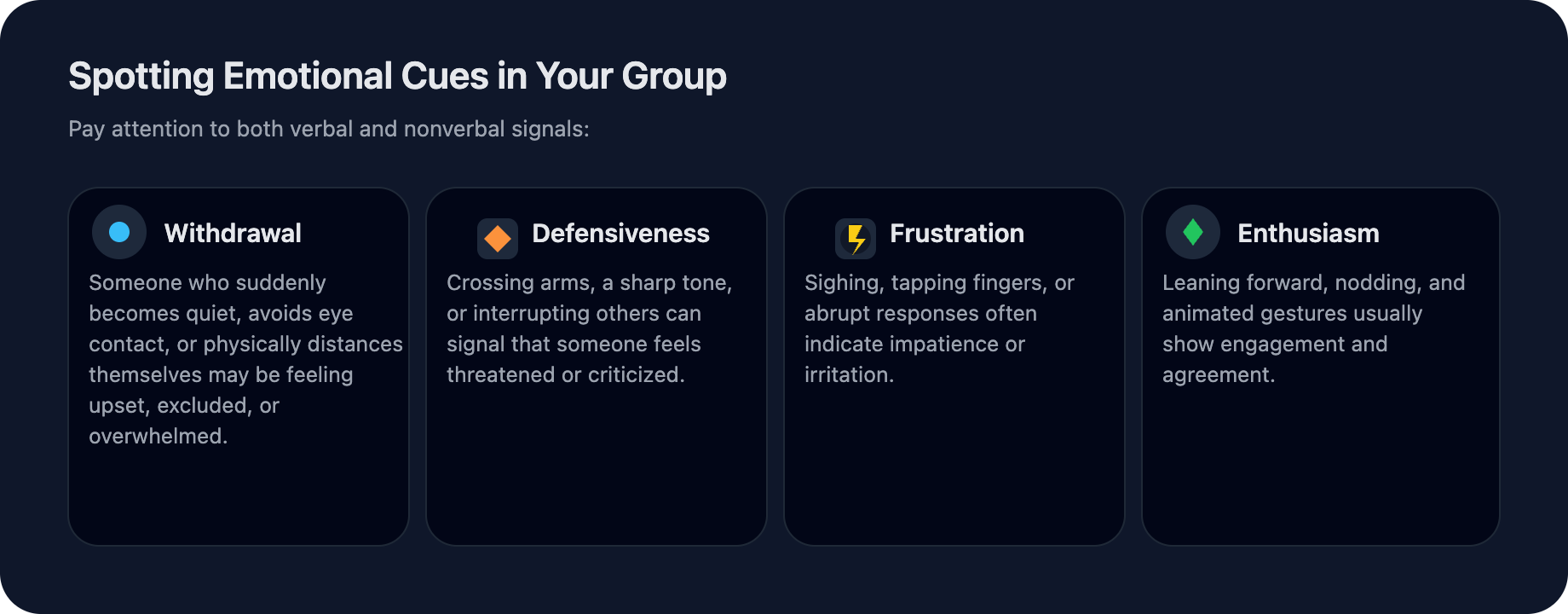Managing emotions in communication isn't about suppressing feelings or becoming robotic. Instead, it's about developing the awareness and skills to channel emotional energy productively, even when conversations get heated. Throughout this course, you'll discover how emotions shape every interaction you have, from casual check-ins to high-stakes negotiations. More importantly, you'll learn practical tools to maintain your composure when triggered, read the emotional temperature of a room with accuracy, and guide tense discussions toward constructive outcomes.
This course emphasizes real-world skills over abstract theory. You’ll learn to stay centered under pressure, spot group conflict early, use empathy to de-escalate tension, and maintain boundaries. Mastering these tools will help you turn emotional challenges into opportunities for stronger relationships and better outcomes.
Social awareness is the ability to accurately read the emotional climate of a group and understand the feelings and perspectives of others. In group settings, this means tuning in to both spoken and unspoken signals—body language, tone of voice, facial expressions, and even the energy in the room. Social awareness allows you to notice when a team member is disengaged, when tension is rising, or when enthusiasm is building, even if no one says it directly.
For example, during a team meeting, you might notice that one colleague is unusually quiet and avoiding eye contact, while another is sighing and fidgeting. These cues suggest that something is off, even if the conversation seems routine. By applying social awareness, you can recognize these subtle shifts and adjust your approach before issues escalate.
Everyone expresses emotions differently, but there are common cues you can learn to spot. Emotional cues can be verbal (what people say and how they say it) or nonverbal (body language, facial expressions, posture, and gestures):

Paying attention to these cues helps you understand not just what is being said, but how people are feeling. This awareness is crucial for preventing misunderstandings and addressing issues before they grow.
Once you've noticed emotional cues, the next step is to acknowledge them directly and respectfully. Acknowledging emotions doesn't mean agreeing with them or trying to fix them immediately—it means letting people know they've been seen and heard. This simple act can defuse tension and build trust.
Consider this example between Dan and Natalie during a team meeting. Dan notices several cues from Natalie such as her sighing, looking down and fidgeting with her hands. He wants to acknowledge the underlying tension with tact:
Natalie: "I just feel like my concerns about the timeline aren’t being taken seriously."
Dan: "Natalie, I can hear that you’re frustrated, and I want to make sure we address your concerns. Can you share more about what’s worrying you about the timeline?"
Natalie: "I’m worried we’re rushing and might miss important details."
Dan: "That’s a valid concern. Let’s talk through the schedule together and see where we might need to adjust."
In this exchange, Dan notices Natalie’s emotional cues and acknowledges her frustration directly. By inviting her to share more and validating her feelings, he helps create a space for open, constructive conversation.
In the upcoming exercises, you'll practice applying social awareness, identifying emotional cues in group settings, and acknowledging emotions in real conversations. These skills will help you navigate group emotional responses with confidence and empathy.
